What Matcha Is, and How This Drink Differs From Regular Green Tea
Recently, the green drink called matcha has become quite popular. Some people boast that they drink it every day, while others, on the contrary, can’t stand it.
We at 5-Minute Crafts decided to figure out what this drink is all about and in what ways it is different from green tea.
Differences in taste
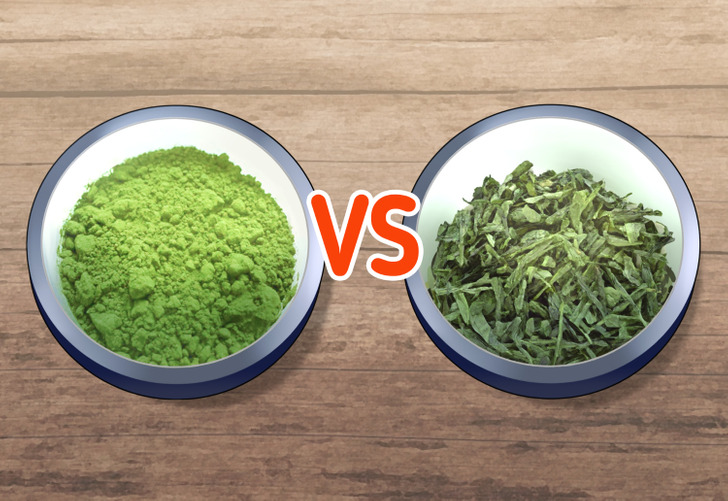
Matcha is a ground-down powder consisting of green tea leaves that have been grown and processed in a special way. Both green tea and matcha have a grassy taste. The aroma of green tea is delicate, sometimes with floral, fruity, or nutty notes. In contrast, matcha tea has a richer, viscous taste. Oftentimes, milk and sugar are added to the drink, thus turning it into matcha latte, a sweet and frothy drink.
A bit of history
For a long time, green tea was considered a valuable remedy that only high society could afford in Ancient China. Buddhist monks learned how to grind green tea leaves into a powder and mix them with hot water. Later, this tradition traveled to Japan where samurais adopted it. It’s their tea traditions that were later formed into the traditional Japanese tea ceremony using powdered green tea, or matcha.
Differences in cultivating
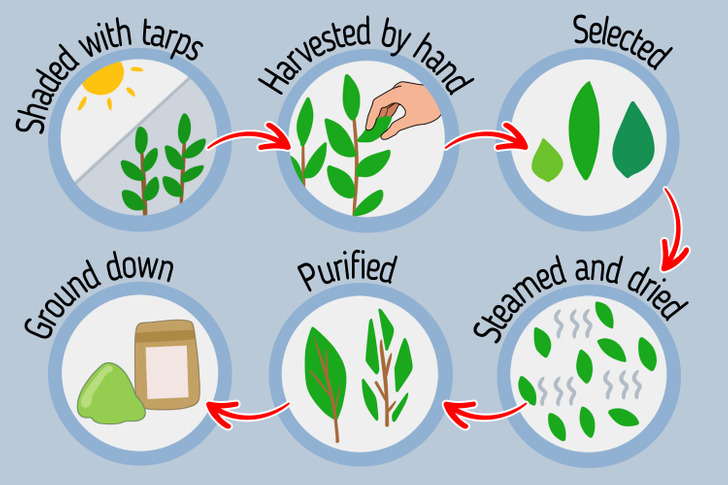
The process of cultivating matcha tea greatly differs from the process of cultivating ordinary green tea.
Before harvesting, the leaves of tea bushes are covered with dark tarps to prevent their direct contact with sun rays. This period of shading lasts for about 3 weeks, during which chlorophyll content increases in the plant. It’s chlorophyll that is responsible for the rich green hue that ordinary unshaded tea leaves lack.
Shaded tea leaves are rich in antioxidants and amino acids. The leaves are carefully selected and harvested by hand, steamed to stop the fermentation process, dried, and ground into a fine powder.
Useful properties
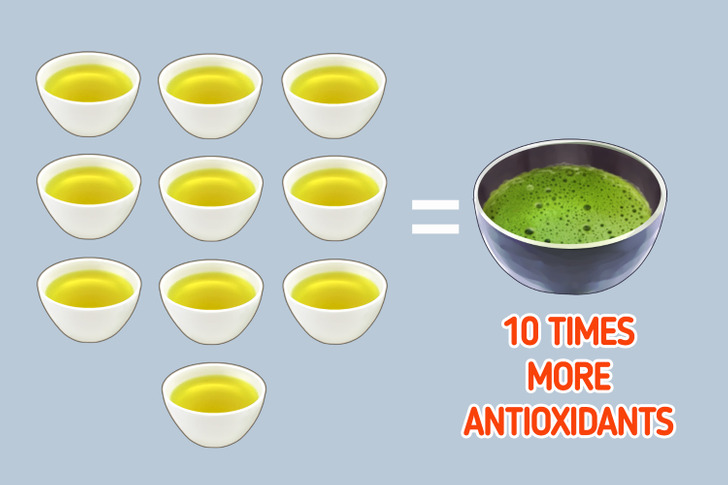
- Matcha contains 3-10 times more antioxidants than regular green tea.
- Since matcha contains ground tea leaves, it has a relatively high level of caffeine — about 34-70 mg, depending on how much product fits in a particular teaspoon. Green tea has only 18 mg of caffeine.
- Matcha contains 5 times more L-theanine than regular green tea (20mg vs 4mg). This amino acid is responsible for the sweet taste of the drink, as well as its ability to reduce anxiety and stress, improve immunity, and improve sleep quality.
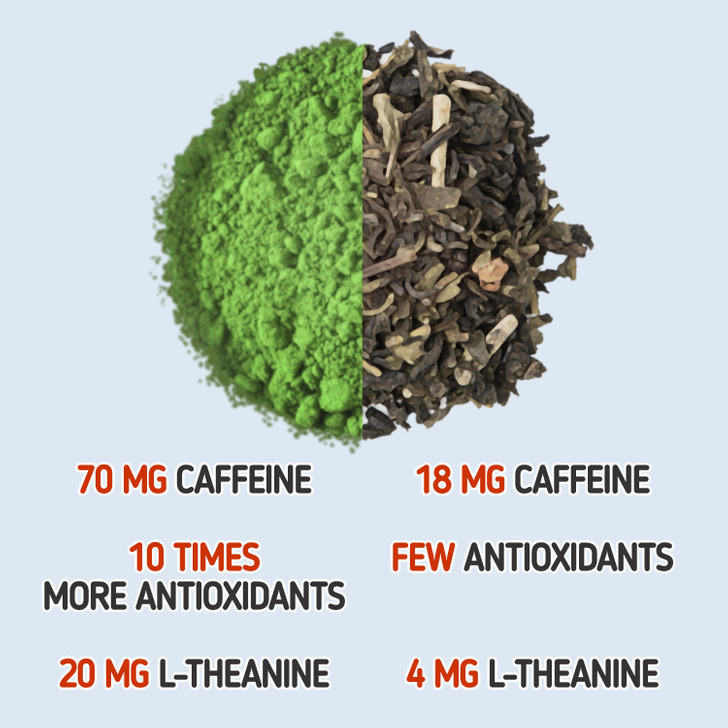
In general, when choosing between matcha tea and regular green tea, it’s worth taking into account the following factors. If you are sensitive to strong flavors and caffeine or are looking to save money, then green tea is a great choice. But if your goal is to treat your body with a healthier drink, then matcha is a winning favorite.
Grades of matcha tea
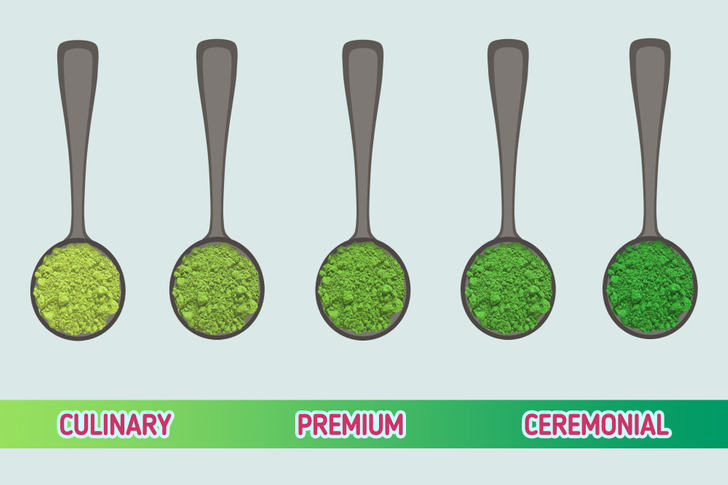
When it comes to quality, matcha tea is divided into grades.
- Ceremonial grade is matcha of the highest quality, the tea of the traditional Japanese ceremony. As a rule, this drink has a delicate, fresh aroma, the product is whipped with hot water, and it’s drunk without any additives or sweeteners. A regular person will hardly notice the difference between a ceremonial grade and a premium one. The drink is assessed on many different criteria, such as taste, color, texture, etc.
- Premium grade is not as sweet as ceremonial, though it possesses all the useful properties of the latter. Premium grade matcha is cheaper and made from leaves from the second harvest, which is why the finished drink has a more pronounced, bitter taste. It’s no surprise that many people prefer to sweeten it.
- Culinary grade is the cheapest of all. It is often used to make smoothies and various desserts. This product is relatively bitter, which is understandable given the terroir, harvest time, and production process, as well as the fact that the leaves for the drink are harvested from the bottom of the bushes. There is an opinion that the culinary grade matcha is of lower quality. In fact, this is just another type of matcha tea, which has different taste characteristics, purposes, and colors.